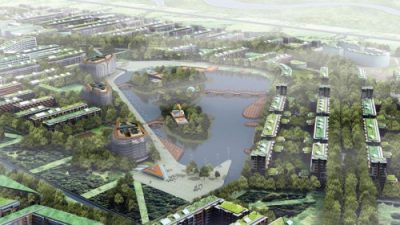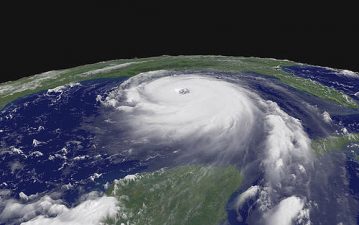Build a “mini city” on Mars? A project being conceived in the United Arab Emirates plans to construct a human settlement on the Red Planet within the next 100 years. These plans are a result of environmental studies made at Abu Dhabi’s on-going sustainable Masdar City environmental project which also studies the wrath of global warming and its effects on the Middle East. Will Mars be the Arab Gulf’s ticket out of an uninhabitable environment?
Related: California City to be rebranded as Mars City
The destruction of human habitat and global warming in the Arab world alone may make much of this region virtually uninhabitable by the end of the 21st century. The UAE’s Mars settlement project was launched recently by Dubai ruler Sheikh Mohammed bin Rashid Al Maktoum, who announced the “Mars 2017” project at the World Government Summit conference held in Dubai. He predicted there would be a sustainable human settlement on Mars within 100 years. The first steps for this venture would include a UAE launced Mars Hope probe, which will make extensive studies of the Martian topography and atmosphere in preparation for a human exploration voyage.
Exploring and settling the Red Planet has been the dream of scientists for years. Findings made by NASA’s Curiosity Rover Mars probe indicate the existence of water on Mars, mostly in the form of ice at the polar regions and underground. There is even speculation that Mars may once have had oceans as much as a mile (1.6 km) deep, as well as a much warmer climate and denser atmosphere.
The presence of sufficient quantities of water would be essential for any sustainable human settlement there. The increasing depletion of water resources in the Arab World, especially the Gulf region, is said to be decreasing by more than 10% alone by the year 2050. This may be a prime reason why this seemingly far fetched project is being planned.
There is no limit to Man’s imagination as to what a future Martian city could look like, as shown in the photo below:

It is no easy task to take humans to Mars, however. A voyage there is estimated to take more than six to eight months, based on current models of space travel vehicles and propulsion. Perhaps it might be much better to make use of funds for such a project towards finding solutions for damage caused by global warming and habitat destruction on our own planet; instead of trying to settle a planet that by current studies to date indicate a much more inhospitable environment than Earth’s.
Meanwhile Mars City plans on building the first Mars prototype city in California, and will feed people using hydroponics. Check out the gala planned for LA next month.
Read more about damage caused to the Middle East by habitat destruction and global warming:
Dispatch from inside Masdar
Amazing “Atlas” tracks Arab world habitat destruction over time
The Wrath of Global Warming and the Middle East
Mars colony image illustrations by Richard Beasley




